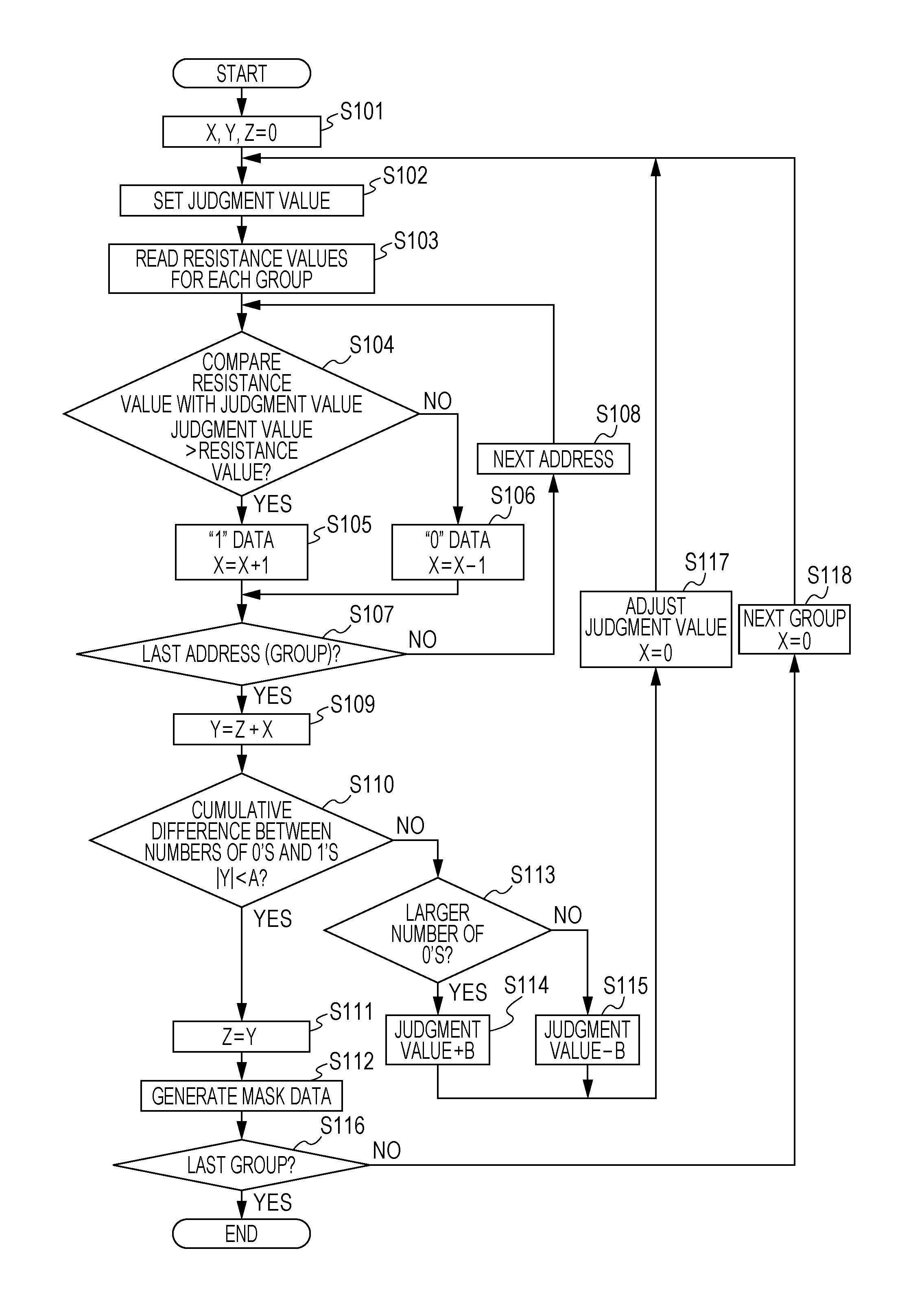Tamper-resistant non-volatile memory device
a non-volatile, memory device technology, applied in the direction of digital storage, instruments, electrical equipment, etc., can solve the problems of hacked or stolen stored key information, the vulnerability of encryption keys to direct hacking, and the rapid growth of concerns about the direct interception of inside information on circuitry from outside parties, so as to achieve secure and stably generated, no overhead area, and easy to duplicate
- Summary
- Abstract
- Description
- Claims
- Application Information
AI Technical Summary
Benefits of technology
Problems solved by technology
Method used
Image
Examples
first embodiment
Overview of Non-Volatile Resistive Memory Device According to Embodiment of Present Disclosure
[0124]FIG. 1 is a block diagram illustrating an example of the schematic configuration of a non-volatile resistive memory device 100 according to a first embodiment. FIG. 2 is a cross-sectional view illustrating an example of the schematic configuration of a memory cell included in the non-volatile resistive memory device 100 according to the first embodiment.
[0125]In the example illustrated in FIG. 1, the non-volatile resistive memory device 100 according to this embodiment at least includes a memory cell array 90 and a control device 93. The control device 93 may not necessarily be included in the non-volatile resistive memory device 100, and a control device located outside the non-volatile resistive memory device 100 may be connected to the non-volatile resistive memory device 100 and used to perform the following operation.
[0126]The memory cell array 90 has a configuration in which a p...
example application to ic
Card
[0406]An example application provides methods for encryption of a private or secret key using digital ID data generated according to an embodiment of the present disclosure, concealment of data using writing based on forming of the encrypted private or secret key, and authentication.
[0407]FIG. 48 is a block diagram illustrating an example configuration of a communication system 500 according to an example application of the present disclosure. In FIG. 48, the communication system 500 includes a reader / writer and data server (hereinafter referred to as the reader / writer for short) 501 and an IC card 502. The reader / writer 501 and the IC card 502 wirelessly communicate with each other via, for example, their respective antennas or the like.
Reader / Writer
[0408]The reader / writer 501 includes a RAM 503, an input / output interface (I / F) unit 504, a central processing unit (CPU) 505, a cryptographic processing circuit 506, and a non-volatile memory device 515.
[0409]The input / output I / F u...
PUM
 Login to View More
Login to View More Abstract
Description
Claims
Application Information
 Login to View More
Login to View More - R&D
- Intellectual Property
- Life Sciences
- Materials
- Tech Scout
- Unparalleled Data Quality
- Higher Quality Content
- 60% Fewer Hallucinations
Browse by: Latest US Patents, China's latest patents, Technical Efficacy Thesaurus, Application Domain, Technology Topic, Popular Technical Reports.
© 2025 PatSnap. All rights reserved.Legal|Privacy policy|Modern Slavery Act Transparency Statement|Sitemap|About US| Contact US: help@patsnap.com



